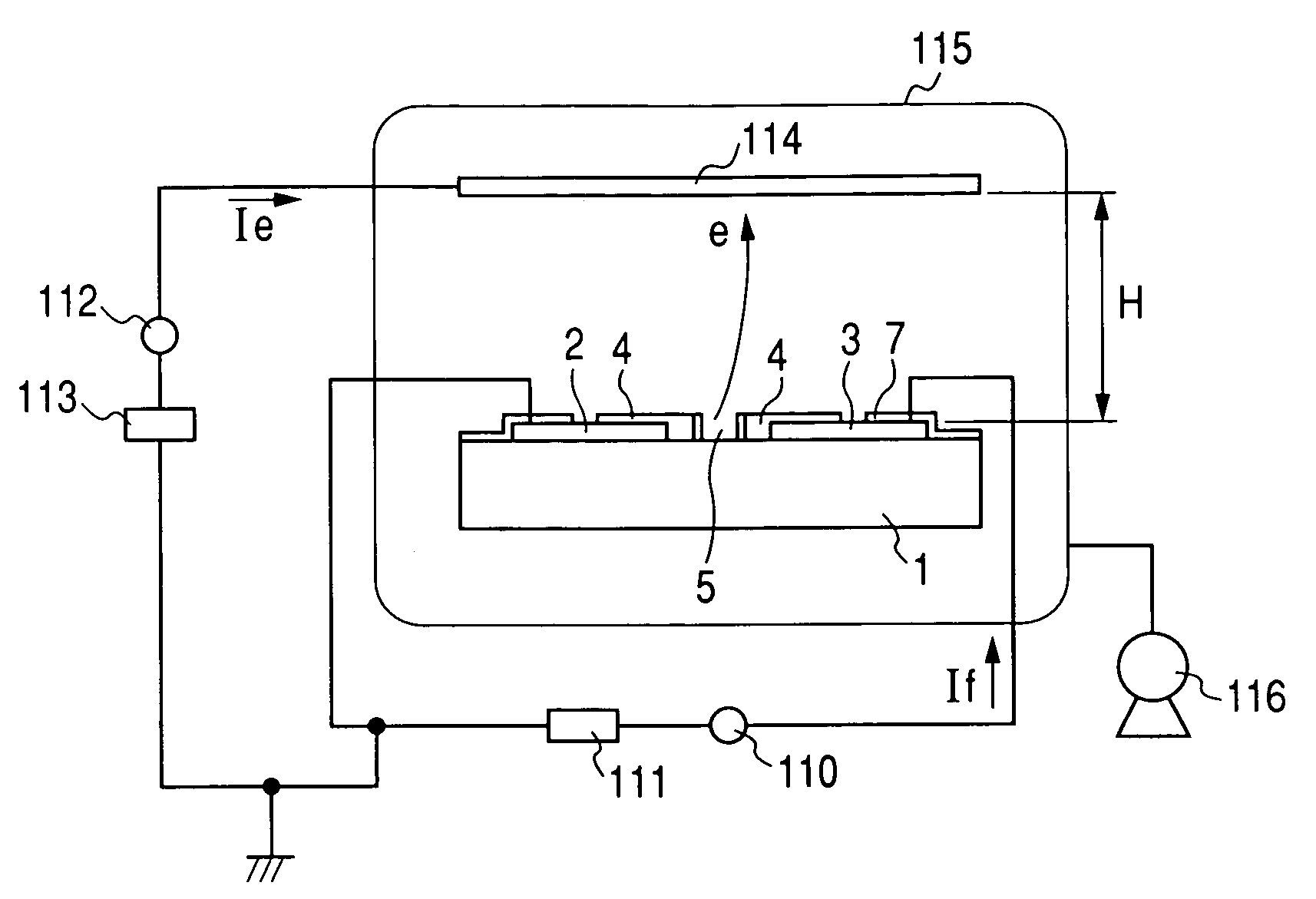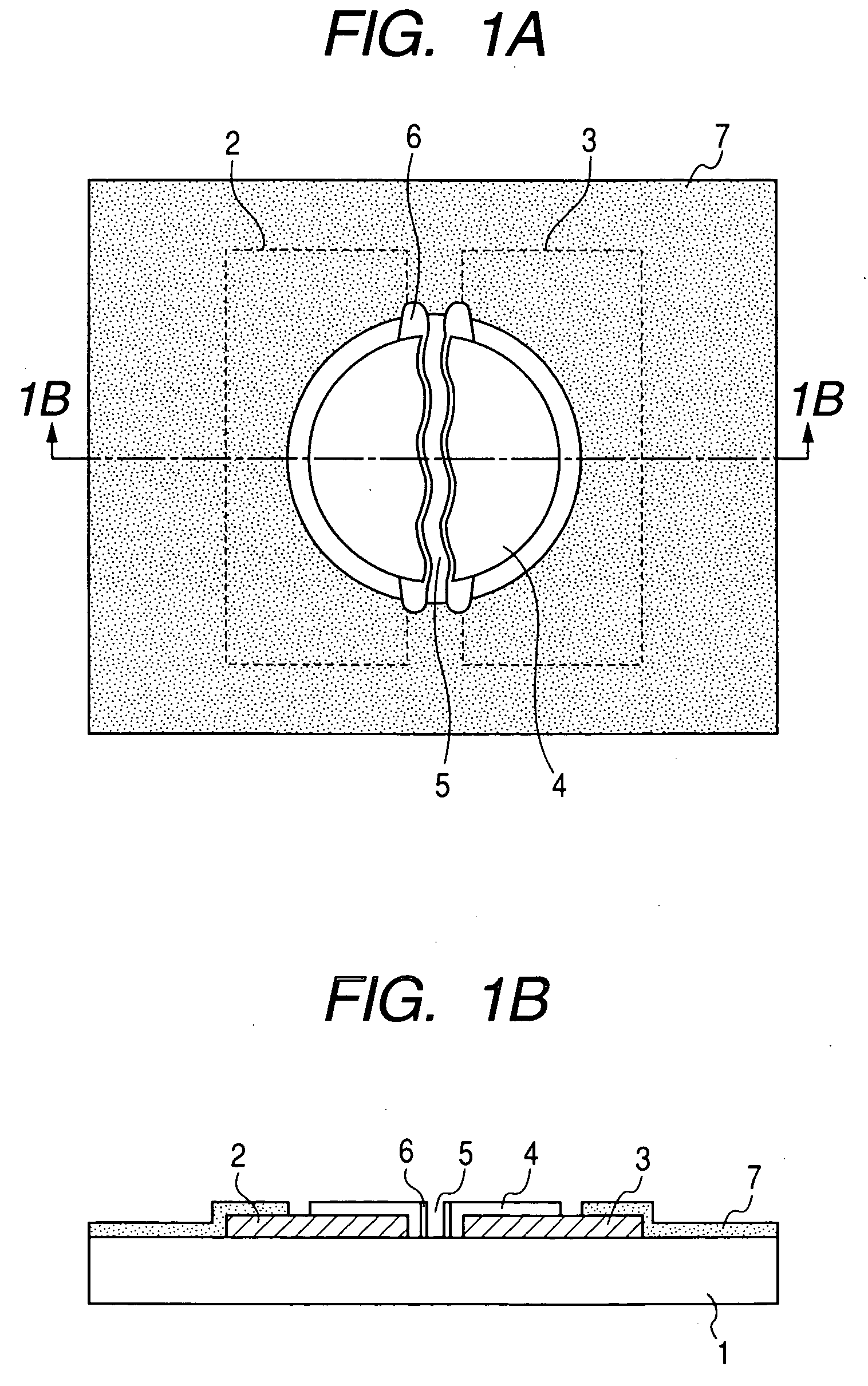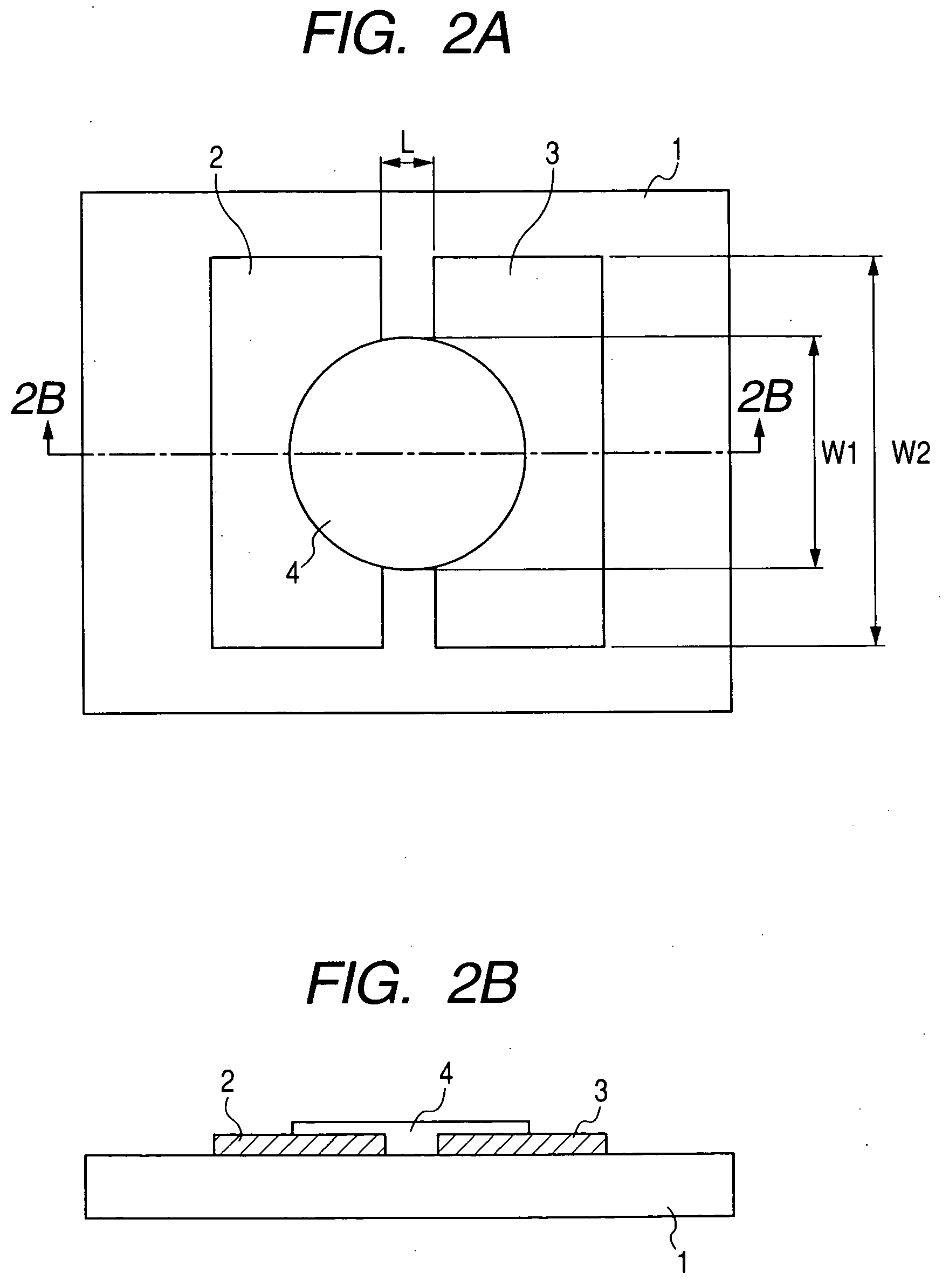Electron-emitting device, electron source, picture display unit and manufacturing process therefor
a technology of electron emission and electron source, which is applied in the manufacture of electric discharge tubes/lamps, discharge tubes with screens, discharge tubes luminescnet screens, etc., can solve the problems of overdischarge remarkably deteriorating the electron emission characteristics of the device, unstable potential of the surface of the insulating substrate, and unstable trajectory of the projected electron beam, so as to reduce the strain on the driving integrated circuit, reduce the cost of the panel, and easy to form a high resistivity film
- Summary
- Abstract
- Description
- Claims
- Application Information
AI Technical Summary
Benefits of technology
Problems solved by technology
Method used
Image
Examples
embodiments
Embodiment 1
[0100] An electron source having a configuration shown in FIG. 10 was produced according to the steps shown in FIGS. 2A and 2B to 6A and 6B.
[0101] An electron source substrate 91 to be used was prepared by applying a SiO2 material on a glass plate of PD200 containing little alkaline component (a product made by Asahi glass Co.) with the thickness of 2.8 mm, and baking it into a SiO2 film with the thickness of 100 nm for a sodium blocking layer.
[0102] On the above described substrate 91, device electrodes 2 and 3 were formed by the steps of: sequentially forming the film of Ti with the thickness of 5 nm as an underlayer, and of Pt with the thickness of 40 nm thereon with a sputtering technique; subsequently applying a photo resist thereon; and patterning the film with a photolithographic process consisting of the serial steps of exposure, development and etching.
[0103] A column directional wiring 92 was formed by printing a linear pattern of an Ag paste (a product mad...
embodiment 2
[0119] An electron source was produced with a similar process to that in the embodiment 1, except that in the present embodiment, the precursor 41 of a high resistivity film was precedently applied to the whole surface of a substrate 91 after an electroconductive thin film 4 was formed, and subsequently the material solution of a water-repellent film 31 was applied onto the electroconductive thin film 4 of each unit with an ink jet method to repel the precursor 41 of the high resistivity film on the electroconductive thin film 4.
[0120] In the obtained electron source, a carbon film 6 is formed so as to reach a high resistivity film 7 from the intersecting point of the edge of an electroconductive thin film 4 with a fissure 5, in each electron-emitting device, and the high resistivity film 7 and the carbon film 6 showed similar surface resistance to those in the embodiment 1. In addition, as a result of having evaluated the electron emission characteristics of the obtained electron ...
PUM
 Login to View More
Login to View More Abstract
Description
Claims
Application Information
 Login to View More
Login to View More - R&D
- Intellectual Property
- Life Sciences
- Materials
- Tech Scout
- Unparalleled Data Quality
- Higher Quality Content
- 60% Fewer Hallucinations
Browse by: Latest US Patents, China's latest patents, Technical Efficacy Thesaurus, Application Domain, Technology Topic, Popular Technical Reports.
© 2025 PatSnap. All rights reserved.Legal|Privacy policy|Modern Slavery Act Transparency Statement|Sitemap|About US| Contact US: help@patsnap.com



